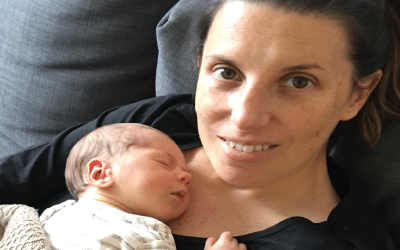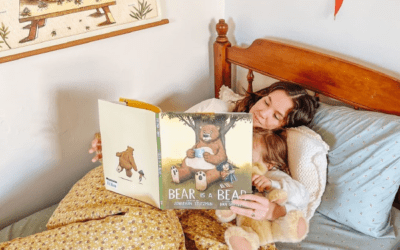A working mom of two finds sleep and sanity again.
While every family’s sleep situation is different, the solution to certain sleep challenges can often be found assessing three important elements: figuring out an age-appropriate schedule that respects the natural need for sleep; creating a sleep-inducing environment and putting a sleep routine into place that promotes relaxation and allows your child to fall asleep and stay asleep.
In our Sleep Diary series, we’ll explore individual families who struggled, experimented and eventually found the help they needed with their family’s sleep. We hope their stories will offer some helpful information for your own family’s sleep journey, and give you confidence that a good night’s sleep is attainable for everyone.
Mariquel came to me when her second child was 11 months old and her older child was almost 3. Her first son had been a good sleeper, as a baby, but the second time around, sleep was not about luck anymore. This is a common myth related with children’s sleep, we think that sleeping well during infancy is just a matter of luck. But good sleep starts with a good education about how sleep works and how to establish healthy sleep habits.
Many times, a small adjustment can make a big difference. For example, knowing that there is a precise time of the day when your child’s body will be ready for sleep and adjusting the family schedule to meet this time, can be enough to help a baby or young child get a full night sleep. (check out Rockin’Blinks Sleep Library Schedules)
Other times, families need a little more help and can benefit from a step-by-step sleep plan and daily support while they work on changing their children’s sleep habits. That was the case with Mariquel. Read about her experience and check out the sleep plan that helped her family get the sleep they needed.
Mariquel says:
It wasn’t until I had my second baby that I realized that I had a problem with sleep.
My first son slept 6 hours straight through the night from the beginning, and I never had the need to inform myself about sleep and the role it plays in a child’s development.
But after my second son was born, the game changed completely. This time around, our baby was awake all night and slept all day, in reverse of his brother. Meanwhile, getting my older child to fall asleep was not as easy as I first thought. Bedtime for my 2-year-old had become quite a process; in order to fall asleep he needed a bottle, an eternal 40-minute song and me sitting by his bedside. If he woke up in the middle of the night during sleep transitions, he was unable to fall back to sleep by himself without another bottle.
After the new baby was home, all that “special attention” was not possible anymore. My husband ended up sleeping with my eldest in one bedroom, and I was sleeping with the newborn in another bedroom. Nobody slept and everyone was unhappy.
I tried everything. At the beginning, I thought, “I don’t want my baby crying all night.” I thought it was cruel, and I didn’t care if it meant I wouldn’t sleep. So I tried sleeping books for babies, mantra songs, lavender oils, lavender pillows, and homeopathic drops. When none of that worked, I thought, “Ok, let’s try leaving him crying.” But he never stopped crying. I gathered strength and let him cry for 20 minutes straight. That didn’t work either. In fact, nothing seemed to work.
Three months went by and I was exhausted. I wasn’t able to concentrate at work and I was on the verge of a breakdown.
I ran into a friend randomly in a parking lot, and I was so exhausted and desperate that I had a meltdown right after she said hello. She went through the same experience and recommended a sleep consultant.
I had already tried reading books about sleep and followed experts’ blogs and Instagram accounts. I had asked friends for their best sleep tricks. But nothing improved my situation drastically enough for us all to get the sleep we needed. So I followed the serendipity of that random encounter and called the sleep consultant.
With her work and counseling, and her personalized approach, I was able to fully understand my sons’ sleep needs and rhythms, and create a routine that allowed them to get the rest they needed.
Today I am in heaven. Both my kids (now 4 and 2 years old) sleep in the same room. They go to sleep by themselves, with just a sweet kiss goodnight. They both sleep 12 hours straight! There is no medicine, no whining, no crying. Just happy, blissful rest.
I never imagined they would be able to sleep together and respect each other’s sleep needs. Or that they would respond to me telling them, “It’s time to go to sleep!” with laughter, running to the bed and letting me tuck them in with joy.
There have been sleep regressions — when we traveled, when they got sick, when we moved, when the oldest stopped napping during the day. But every time I lost the rhythm, I called Lola and she was able to coach me and guide me to find that rhythm again.
Now I have time to be with my husband, to read a book, to watch a movie. I have time to rest.
If you’re feeling like I did, know that you don’t have to struggle. It is so common to be unaware of healthy sleep rhythms that you get convinced that “not sleeping well” is a must when you have a kid. That is not true! Don’t accept that false statement. You and your kids deserve and need proper rest, and it is possible to get it.
The Sleep Plan:
- Adjust the Sleep Schedules. It can be tricky when a toddler and a baby are room sharing. We adjusted both of Mariquel’s children’s sleep schedules (both naps and night time sleep) to respect each child’s biological needs at their respective ages. While the baby still needed 2 daily naps, the oldest only needed one, and was ready to skip it some days. We set a similar bedtime for both children (7-7:30pm) since they were room-sharing. Check out Rockin’Blinks suggested schedules for each age.
- Create a consistent sleep routine specific for each child. For Mariquel’s children, they included recognizable pre-sleep steps like brushing their teeth, putting pajamas on and reading books, hugging mommy, getting into bed and saying good night. Feeding was not part of their sleep routine anymore.
- Change the children’s sleep habits, and the associations they needed to fall asleep. For the baby, I suggested leaving the room while he was awake in the crib, since he was already falling asleep on his own. For the toddler, I suggested moving more slowly, first having him fall asleep in his own bed (instead of his parents’ bed) but with his parent next to him, then moving his parent’s chair further from the bed, and after a few days, moving his parent out of the room completely. All these new boundaries needed to be respected all through the night.
- Communicate the new routine and sleep expectations. It was important that Mariquel’s children could each feel empowered throughout the process, and understand the changes that were about to happen. For the baby, that simply meant talking through the sleep routine and describing the steps. For their older child, Mariquel had a family meeting to talk about the importance of sleep, and why they were making changes in his sleep routine.
- Validate the children’s’ emotions. Were there tears during all these changes? Yes, there were! Change is hard for both parents and children. Changing a sleep routine also involves setting new boundaries and rules: “Mom’s bed is not where you will fall asleep tonight,” or “there are no more screens at this time of the day,” or “there is no extra bottle tonight.” Mariquel made her toddler an active participant in his new sleep routine and validated his emotions throughout the process, saying things like: “It’s ok to feel angry because you want to sleep in mom’s bed. I like your snuggles too. We all sleep better when we have our own space and I want to help you find the way to fall asleep in your bed.” Allowing children to express their emotions around these changes is necessary, and will help them accept the new boundaries around sleep.
- Be consistent, but patient. There is no miracle “3 day sleep solution.” Changing habits requires time and dedication.
Dear parent, we know that debates around sleep practices can get emotional and intense. But I truly believe this is not about what is right or what is wrong. It’s about what works and it’s right for your family. Good sleep is important. If you feel your children are struggling with sleep and this creates tension in your family. Don’t give up! There is always hope. It’s never too late to start getting good sleep.









